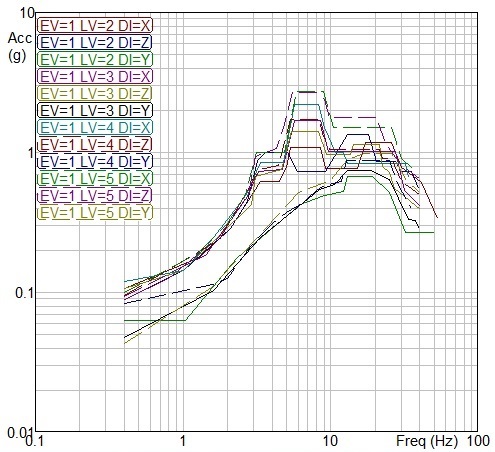PIPESTRESS - Floor response spectrum analysis |
 |
Floor response spectrum analysis is used to evaluate the effects of earthquakes and other support movement events (plane crash, explosion, etc.)..
Floor response spectrum analysis is based on the solution to the "Clough & Penzien" support movement problem in the frequency domain, and does not require any information about the time history load (the load is described by the spectra).

Intermodal combination methods
Several mathematical methods are programmed in PIPESTRESS for the calculation of the response due to the modes below the cut-off frequency (flexible modes) :
![]() SRSS superposition
SRSS superposition
![]() Absolute superposition
Absolute superposition
![]() Ten percent grouping method
Ten percent grouping method
![]() RC double sum method
RC double sum method
![]() Rosenblueth
Rosenblueth
![]() Der Kiureghian (CQC)
Der Kiureghian (CQC)
Rigid modes
The contribution to the total system response of the higher (rigid) uncalculated modes for both single and multi-level floor response spectrum analysis is obtained by the "left-out-force" method. DST has rigorously validated this method.
Mono- and multi-level
The piping system supports which move during the earthquake can be partitioned into groups of supports which may be assumed to be moving in parallel. These groups, which usually correspond to supports acting in the same building at approximately the same elevation, are called "supports levels".
Originally, the envelope of the spectra for different levels was applied as a single level spectrum and it was incorrectly assumed that the solution was an enveloppe solution. More recently, the "multi-support level" method has been used with separate spectra applied for each support level
PIPESTRESS accepts up to 99 support levels. The multi-level participation factors are calculated by a stiffness-weighted method rather than the standard mass-weighted method.
Composite damping
The strain energy weighted composite modal damping defined in ASME N-1233 is fully implemented.

